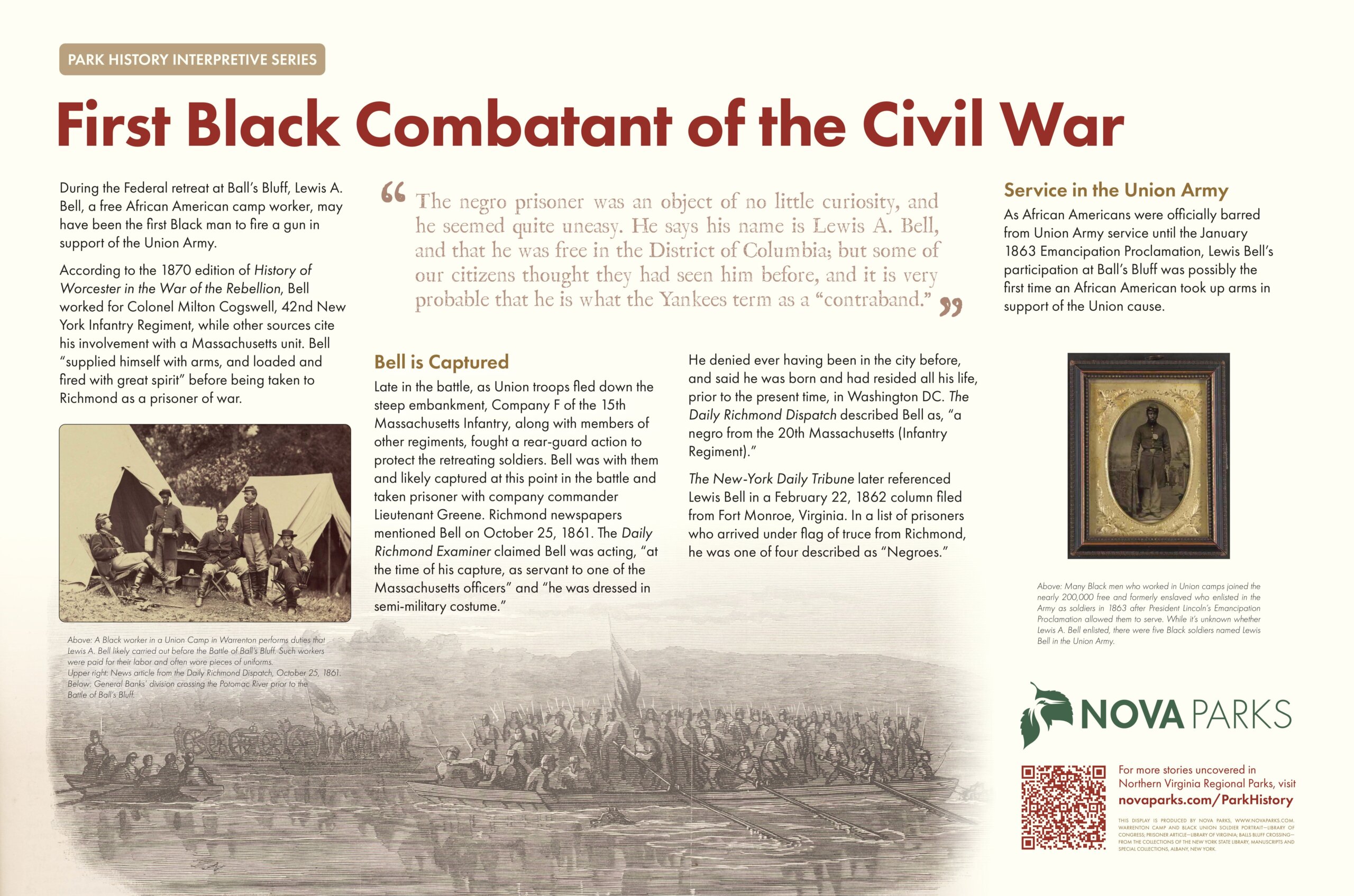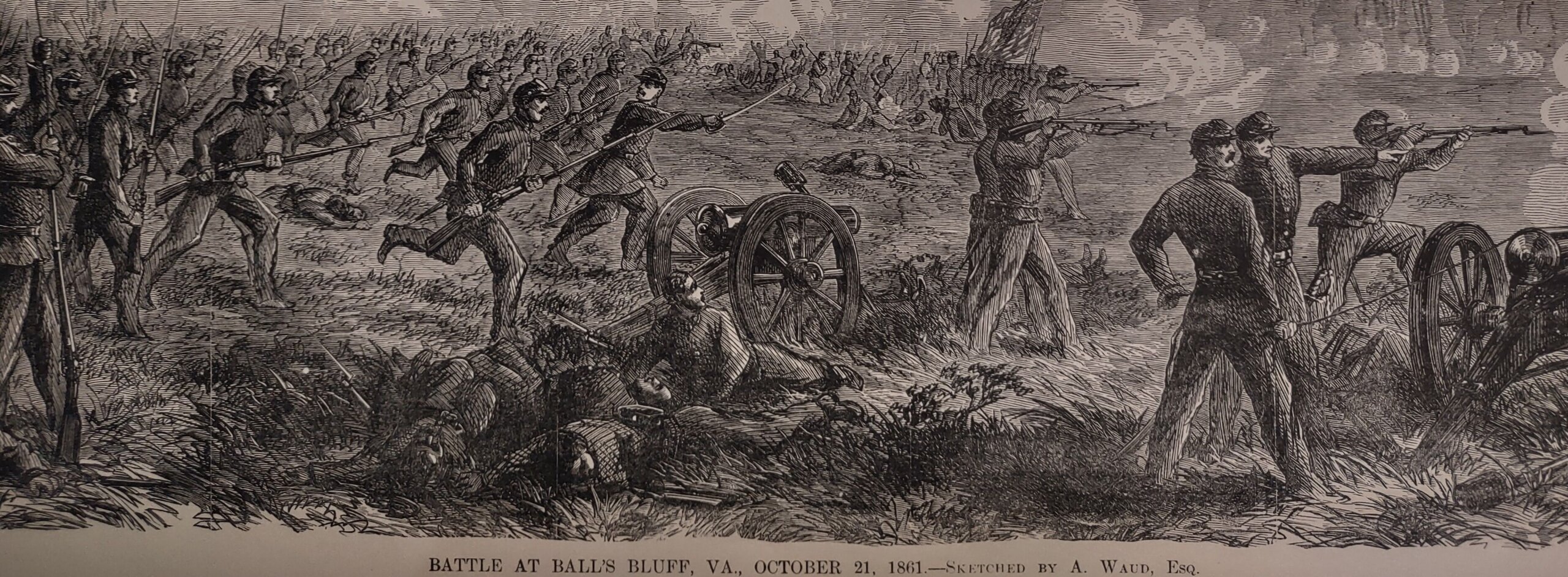The man who historians believe was the first Black man to fire a weapon in support of the Union Army — even though he was forbidden from joining the army — will be honored with an interpretive sign at Ball’s Bluff National Cemetery, northeast of the town of Leesburg, Virginia, at the site of an 1861 battle.
Lewis A. Bell fired at Confederates during the Battle of Ball’s Bluff, on Oct. 21, 1861, said Paul McCray, historian with NOVA Parks.
The park authority and the Loudoun Branch of the NAACP, along with local leaders, will unveil an interpretive sign on Saturday, Feb. 18, at the cemetery, which is a short walk from Ball’s Bluff Battlefield Regional Park, as part of Black History Month celebrations.

McCray said Bell was a camp worker with the Union Army in Maryland, and had traveled across the Potomac River to Virginia from Maryland with a Massachusetts unit.
“Balls Bluff is just a bit north and east of Leesburg, right on the Potomac River, and it sits very high above the river,” said McCray. “It wasn’t easy for the Union soldiers to come across the river and make their way up to the battlefield,” high above the Potomac.
“He worked for one of the officers, doing camp chores. Coming to the battlefield, he probably carried extra gear and supplies,” said McCray. “He kind of got caught up in the fighting.”

Toward the end of the battle, Union troops struggled to retreat down the steep embankment.
“Lewis Bell must have picked up a rifle. There was probably some fallen soldiers, and there were rifles around. And according to the regimental history, he picked up the rifle and fired at Confederates,” said McCray. “He wasn’t armed or authorized to fight, because Black men weren’t allowed in the army at the time.”
After four months of research with the Friends of Balls Bluff, McCray said they believe Bell was the first man to fire a weapon in support of the Union Army.
The park authority and the Loudoun Branch of the NAACP, along with local leaders, will unveil an interpretive sign on Saturday, Feb. 18, at the cemetery, which is a short walk from Ball’s Bluff Battlefield Regional Park. The sign being unveiled is part of the park history series focused on telling a more inclusive and compete history of Northern Virginia.
According to an 1870 description, Bell “supplied himself with arms, and loaded and fired with great spirit,” before being captured.
“The soldiers that were captured, including Louis A. Bell, were taken to Richmond and were kept there for about four months, when they were exchanged for Confederate captives,” said McCray. “And that’s kind of where we’ve lost track of him.”
McCray said it’s unclear whether Bell joined the Union Army in 1863, when Black men were allowed to join, “but we do know there were five Lewis Bells in the Black troops for the last two years of the war.”
“In 1863, after the Emancipation Proclamation was ordered, 200,000 Black men volunteered to fight for their freedom,” said McCray. “And that is really the significance of Lewis A. Bell — he may have been the first.”








